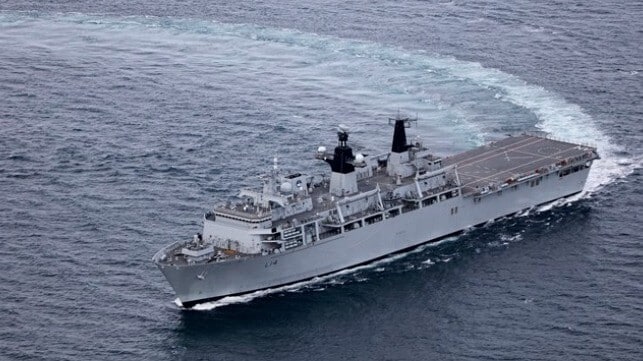Royal Navy Set to Decommission its Last Two Amphibs
UK to Retire Five Royal Navy Ships, Including Last Amphibious Assault Vessels

UK Defence Secretary John Healey Announces Retirement of Five Royal Navy Ships
John Healey, the UK’s Defence Secretary, has officially announced the retirement of five Royal Navy ships. This includes the UK’s last two amphibious assault ships. These vessels were already informally considered for retirement or sale for years, but Healey’s decision to make it official has sparked criticism from the opposition.
Healey addressed the House of Commons, saying, “Before the election, we knew there were serious problems with defense – one previous Defence Secretary told this House last year that our Armed Forces had been ‘hollowed out and underfunded’ over the last 14 years. However, as I have told the House since taking office, the problems were even worse than we thought.”
Ships Marked for Retirement
One of the ships being retired is the HMS Northumberland, a frigate built in 1989. It was upgraded in 2018, but during a recent maintenance, the Royal Navy found major structural problems. Repairing these issues would be too costly, making it not worth fixing. Navy Lookout, a UK defense news source, pointed out that the Type 23 ships like the Northumberland were designed with thinner materials meant to last about 18 years. These ships have been in service much longer than planned.
ABS Chairman and CEO Honors IMO Secretary General on Behalf of Shipping Industry
The amphibious assault ships, HMS Albion and HMS Bulwark, will also be retired. These two ships have been mostly inactive for a while. Their retirement ends the Royal Navy’s traditional amphibious assault capabilities. Back in 2017, both ships nearly faced early retirement due to costs, but they managed to remain active until now. HMS Bulwark has not been fully operational since 2020, and HMS Albion has been in reserve since last year. Both are about 20 years old, and there were already talks about selling them to another country. Reports suggest that the Royal Navy is struggling to find enough sailors to operate these ships.
More Retirements in the Fleet
Along with the amphibious ships, the UK will also retire two support vessels, the RFA Wave Ruler and the RFA Wave Knight. These fleet oilers, used to refuel other ships, have been out of use for years. A major reason for this is the lack of crew members in the Royal Fleet Auxiliary (RFA), which operates these ships. Crew members have voiced concerns over low pay that hasn’t kept up with inflation since 2010, leading to real wages dropping by about 30%. As a result, union members in the RFA have gone on strike multiple times, with more strikes likely to come.
Helicopter Cuts and Cost Savings
In addition to the ship retirements, the UK armed forces will also remove 14 Chinook helicopters and 17 Puma helicopters from service. These cuts are part of a broader strategy to save money. Defence Secretary Healey estimates that the retirement of these ships and helicopters will save around $630 million over the next five years.
Conclusion
The decision to retire these ships is part of a larger effort to address long-standing issues in the UK’s defense budget and fleet management. However, the move has been controversial, as critics argue that it will reduce the Royal Navy’s capabilities at a time of growing global tensions. The impact of these retirements will be closely watched as the UK looks to modernize its armed forces.
